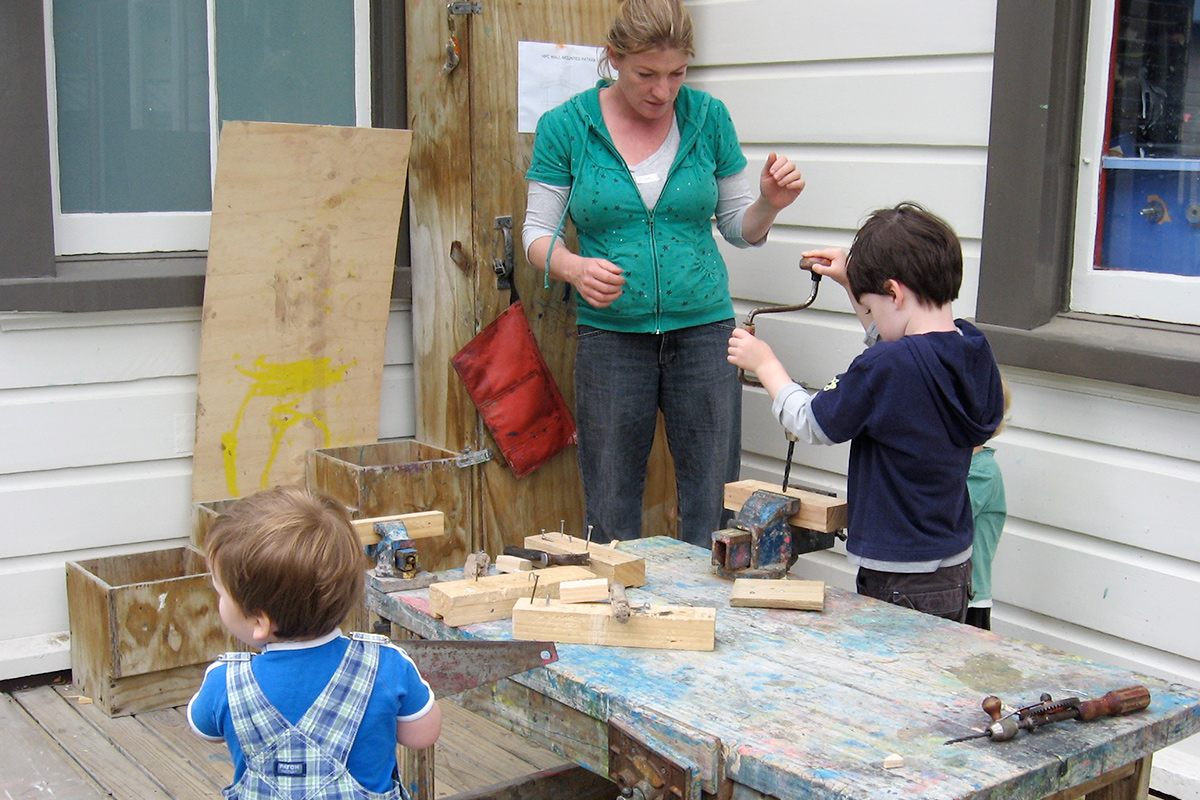The influence of Playcentre

Kiwis are renown for their self sufficiency due to the remoteness and limited resources available to this farming land. The legendary status of the no. 8 gauge fencing wire, sums up the “Kiwi ingenuity”. As is 2×4 wood (“World famous in New Zealand”)! But you could add the remarkable story of the Playcentre Federation to this list. The Early Years success story started by mothers in World War II.
The early days

Children at Kelburn Playcentre. Ref: 114/150/04-F. Alexander Turnbull Library, Wellington, NZ.
Playcentre was first founded in 1941 by a group of mothers. Joan Wood, Inge Smithells and Beatrice Beeby were trying to overcome young mothers problems with preschool children. They needed support, company and education whilst their husbands were fighting overseas in the 2nd World War.
They decided to set up a playcentre with a trained preschool supervisor. A roaster of mothers supported the supervisor to allow other mothers to do the chores they could not do with young children. And this is the ingenious part of Playcentre’s success. They grew interested in child development, the importance of play and the vital role community played for these families.
Playcentre started out as two afternoons a week with a supervisor and two mothers, sessions of 12 kids and a ‘membership’ of 56. Due to it’s immediate success three months later the “New Zealand Playcentres Association” was boldly formed. “Kiwi ingenuity” at its best. They took a simple and universal need and sorted out a solution with the ingredients available to them.
Playcentre today
There are now 489 Playcentres firmly rooted in the New Zealand culture and education system (and 10 in Japan). Run by groups of parents providing early years education and support to young families.
Its purpose now is three fold.
- Early Childhood Education Centres provided early years education (0-6yrs) in a safe learning environment. Child initiated play was the priority. So was proving families were the first and most important educators of their children.
- Providing Adult Education to Parents that emphasises self-help and personal development. The education covers areas such as child development, play and learning, parenting skills, early childhood education programmes, group and facilitation skills and management skills.
- Educational Publications. Playcentre provides publications and resources primarily to enable Playcentre members to enhance their parenting skills and train towards gaining their early childhood care and education qualifications. Other individuals or organisations, particularly those involved in the field of early childhood education also have access to such resources.
In practise
A typical session will take place in the local Playcentre in Hataitai, a suburb in Wellington given over to child’s play. Here the sessions are especially relevant to learning through child initiated play in mixed age sessions. The children are in charge of their play. It is important they experience personal power and a sense of autonomy. It was always creative and exciting to watch the children evolve and develop play themes.
The belief is that this philosophy will enable children to become adults who make their own decisions, direct their own lives and maintain positive relationships with others. Parents are involved in the careful scaffolding of the play and are trained to observe when to support the child and when to stand back and let the child fly.
My experience of it
I can still feel the rush of excitement and possibility I felt when I entered the villa. Set in a garden filled with typical kiwi flora; tree ferns, cabbage trees and flax with drift wood and stone sculptures scattered amongst the foliage. The space is devoted to kids and their play, with spacious sandpits (min 3m x3m), large shade clothes, a play ground area and excellent water play areas.
Playcentre highlights key learning areas in child play and devoted villa to these areas.
We had a library where the books, puzzles and quiet play area was, (here also was a little bedroom with a cot for naps).
In the main area, painting is serious business! Easels with good quality pigments on large sheets of good quality paper were provided to allow for full physical involvement. Paintings were often mounted on coloured paper and neatly named and dated in the corners. Collage, clay, hand made salt play dough, finger painting and other creative variations including my favourite – junk construction!
There was an area for soft play, music and movement with proper percussion instruments and ukuleles, a kitchen and eating area. There was also, in this more domestic space, the role play, dressing up and cooking section.
On the porch, a covered play area for woodwork included proper tools! You could also find a child’s height work bench, a substantial and flexible water play area, sumptuous sandpits, the ride on area and the shed filled with props for playing.
It was a wonderful atmosphere to be in, a community nurturing and playing together. Yet, so simple!
For further information please visit the Playcentre Federation.
